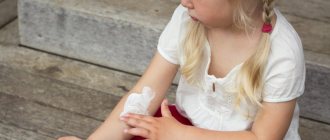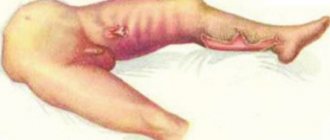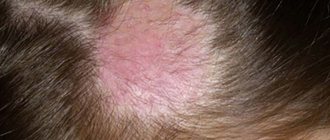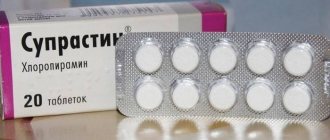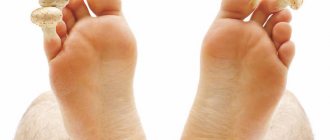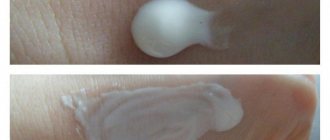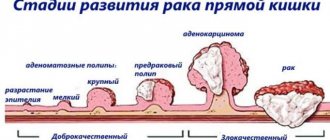Tinea versicolor (also called pityriasis versicolor or iridescent) is popularly known as sun fungus. It is believed that this skin disease most often affects residents of regions with warm, humid climates. In addition, in most cases it appears after a short stay in the sun.
What is color (pityriasis versicolor, multi-colored) lichen in humans
Colored or multi-colored lichen in humans is a skin disease that causes the activity of a special type of yeast fungi Pityrpsporum orbiculare and Malassezia furfur, parasitizing in the upper layer of the epidermis.
The characteristic symptoms of lichen are the appearance of pinkish-cream, brownish-yellow and red spots of irregular shape, covering mainly the skin on the chest, shoulders, abdomen, back, armpits and groin. Less commonly, spots appear on the face, on the head under the hair and on the genitals, almost never on the feet and hands. Unlike ringworm, when patches of ringworm appear on the scalp, the hair never falls out.
At first, the spots are pale and small in size (3-5 mm), but then they become brighter, enlarge and spread, merging into large lesions with jagged edges. Ringworm patches are sometimes slightly or moderately itchy.
A common type of pityriasis versicolor is the pityriasis form, in which flaking of the skin appears on the surface of the spots, similar to flour or fine bran.
The disease is characterized by a long course with exacerbations. But lichen versicolor is not dangerous to health, causing only aesthetic defects and psychological discomfort.
It has been noticed that the longer and more often the skin is exposed to the sun, the lighter the spots become and the more they peel off under the influence of ultraviolet radiation. Therefore, another name for the disease is sun fungus. Under sunlight, the pathogen dies and is removed from the skin along with exfoliated scales. Sometimes pityriasis versicolor can heal spontaneously with frequent ultraviolet exposure.
Symptoms
- The main symptoms and complaints of patients: spots, slight itching and flaking.
- The main symptom of lichen versicolor is spots on the skin of different colors: pinkish, white and yellowish-brown spots.
- Peeling appears on the spots in the form of small scales, similar to wheat bran. That’s why it was also called “pityriasis versicolor.”
- Location of spots: shoulders, arms, neck, upper body (back, chest), stomach. On the face - extremely rarely.
- The size of the spots ranges from a few mm to 2-3 cm.
- The appearance is gradual: the spots are first small, single, then merge into conglomerates. Along the periphery there are also isolated small spots.
- There is no inflammation: no pain, no swelling, no suppuration.
- In summer, against the background of healthy tanned skin, the affected spots look white, as the fungus damages the pigment cells of the skin (melanocytes) and prevents them from accumulating pigment.
In the photo: spots on the skin with pityriasis versicolor
In the photo: spots merge into a conglomerate
In the photo: white spots on the skin of the back
On the head
If pityriasis versicolor is located on the scalp, it is called seborrhea, or dandruff.
The symptoms are exactly the same - spots, itchy scalp, flaking. At the same time, it is peeling that most often worries patients. How to treat pityriasis versicolor on the head and other hairy areas of the body - and in the same way as on other parts of the body. Just choose not a cream or ointment, but a spray or solution for external skin treatment plus shampoo with an antifungal agent.
Mechanism of action of antimycotics
How to treat pityriasis versicolor in humans? Of course, antifungal agents (antimycotics). To get rid of skin manifestations of tinea versicolor, first of all, external remedies are needed.
Let's look at how ointments for ringworm work. The active substance of antifungal ointments, gels, and solutions penetrates the loosened layer of dead cells of the stratum corneum of the skin and destroys parasitic fungi and mycelium threads. The mechanism of action of antimycotics is based on:
- destruction of the membranes (protective membranes) of fungal cells due to blocking the production of the main element of these membranes - ergosterol;
- stopping the supply of nutrients to skin cells necessary for the activity of Pityrpsporum orbiculare.
Thus, antimycotic ointments and gels destroy fungi, stop the spread of their colonies and quickly eliminate colored spots.
If the drug is chosen correctly, the dose and treatment regimen are developed taking into account the severity of the process and associated pathologies, then the signs of the disease begin to fade from the first days of use.
Reviews
Victoria, 23 years old I was recently diagnosed with tinea versicolor - long-term treatment is guaranteed, according to the doctor. I didn’t feel any discomfort, there was no itching either, but I was embarrassed to go to the beach in a swimsuit. The doctor prescribed Nizoral tablets, clotrimazole ointment, and rubbing with weak salicylic alcohol. So far it’s helping, my skin is almost clear, but I’m still healing.
Ksenia, 31 years old My son had tinea versicolor - he was cured with the help of Mycozoral. They smeared them with boric acid, constantly disinfected their bed and clothes, and used a special shampoo. Now there are no signs of deprivation - the child is healthy, he was treated for a month.
Mikhail, 38 years old I know almost everything about the disease tinea versicolor - its treatment, symptoms, and causes are very familiar to me. I have been undergoing treatment unsuccessfully for five years now, with varying success. I tried a huge number of medications and folk remedies - at first it helps, but then the dermatosis returns again. Doctors shrug their shoulders - this treatment helps others.
“Which tablets are the most effective for tinea versicolor in humans ?” - this question is most often asked at an appointment with a dermatologist. There is no exact answer to the question posed, because everything depends on the degree of neglect of the lichen, the age category and the characteristics of the body of each patient. New growths should be thoroughly examined by a doctor. Only after a medical examination specific to this disease will a dermatologist be able to prescribe suitable medications to eliminate skin inflammation.
Effective drugs
Let's consider how to treat tinea versicolor on the skin in order to eliminate unpleasant-looking spots as quickly as possible. Dermatologists prescribe not only antifungal ointments for tinea versicolor in humans, but also other groups of medications in the form of creams, solutions, lotions and sprays that help get rid of the pathology.
Names and features of effective antifungal agents with different active ingredients
| Therapeutic basis | Some properties | Basic drugs |
| Ketoconazole | Reduces the ability of fungi to form colonies and the strength of cell membranes, which leads to cell destruction and death of the pathogen. At the same time it inhibits the activity of streptococci and staphylococci. It is not absorbed into the blood and does not affect the functions of the body as a whole. Allowed during pregnancy. | Dermazol in the form of cream and shampoo for tinea versicolor of the scalp. Sebozol in the form of ointment, shampoo and liniment. Nizoral cream, Mycoquet ointment. Apply ointment or cream to the affected areas of the skin and a 1-3 cm area around them up to 2 times a day, without rubbing. The average duration of treatment is 14-20 days. |
| Bifonazole | Products based on bifonazole penetrate the skin well, but a certain amount of the substance is absorbed into the blood, so ointments are not used in the first three months of pregnancy, for the treatment of nursing mothers and infants | Bifonazole, Bifosin (cream, solution, spray), Mikospor cream. Apply once a day before bedtime, gently rubbing into the affected areas. The course is about 2 weeks. |
| Clotrimazole | It is almost not absorbed through the skin into the blood and has no effect on the body. The ointment or cream is thinly applied to sore spots up to 3 times a day, using an average of 2 weeks. | Cream Candide, Candibene, Kanesten. Clotrimazole ointment and cream are the cheapest remedies for tinea versicolor (70-100 rubles). Triderm is a combined medication containing clotrimazole, the hormonal substance betamethasone and an antibiotic. Destroys fungus, eliminates bacteria, relieves swelling and itching. The cream is used for weeping lesions on the skin, the ointment is used against the background of peeling and dryness |
| Terbinafine (allylamine group) | Actively penetrates the skin, creating high concentrations of the medicinal substance. Almost no effect on the body. Prohibited for blood diseases, severe liver and kidney failure, tumor processes, metabolic diseases, thrombophlebitis, varicose veins | Terbinafine cream, spray and ointment, which are considered inexpensive products (within 150 rubles), Atifin cream, Lamisil gel, Exifin, Fungoterbin, Binafin, Thermikon, Mikonorm, Terbizil, Terbinox |
| Naftifin | In addition to the ability to destroy fungal cells, Naftifine suppresses the activity of skin bacteria that cause secondary infection in tinea versicolor | Cream Mikoderil, Exoderil |
| Sertaconazole | It is practically not absorbed into the blood and is not found in urine. Recommended course of treatment is 4 weeks | Zalain, Sertaconazole, Sertamicol |
| Isoconazole | Isoconazole without hormonal supplements and antibiotics can be used in infants from 1 month. Contraindications for Travogen and Travocort: skin lesions with chickenpox, smallpox, rosacea, perioral dermatitis, herpes zoster, tuberculosis, rosacea | Isoconazole cream, Travogen cream with an antifungal and antibacterial spectrum of action. Travocort cream, which contains the antifungal substance isoconazole and the glucocorticosteroid diflucortolone valerate. The product not only destroys the tinea versicolor fungus, but also relieves inflammation, allergic reactions, dries and eliminates itching. |
| Econazole | Exhibits a pronounced fungicidal (antifungal) and bactericidal effect | Ifenek ointment, Ecodax cream. Tetradex is a hormonal cream with econazole, the antibiotic gentamicin and the glucocorticosteroid dexpanthenol. Prescribed if tinea versicolor is complicated by bacterial inflammation. Has a wider range of contraindications |
| Miconazole | Contraindications include: kidney and liver failure. Prescribed with caution for diabetes mellitus, blood microcirculation disorders | Daktarin, Micogal and inexpensive Mycozon cream |
| Ciclopirox | It is characterized by rapid penetration into the layer of skin affected by lichen, creating foci with a high concentration of the medicinal substance | Batrafen cream Remains therapeutic effect for another 10-14 days after cessation of treatment |
Separately, we should highlight a veterinary ointment with natural substances, which perfectly helps people suffering from dermatological diseases, including ringworm. This is the famous ointment Fungibak Yam, Yam1, Yam BK or simply Yam, which has a detrimental effect on fungi, bacteria, and parasites. Its composition includes only natural components: sulfur, zinc oxide, tar and salicylic acid. The ointment should not be used by people who are allergic to these substances or if there are abrasions or ulcers on the skin.
The spots are treated by applying the ointment with a cotton swab twice a day and leaving it on the skin for no longer than 5 minutes. Wash off with a cotton swab dipped in water or sunflower oil. After 7 days, if there are no manifestations of allergies, the ointment can be left on the spots for up to 10 minutes. Yam gives noticeable results already after 5-10 days of use.
Causes of appearance and infection
Ringworm is not considered a contagious disease, since this fungus can be present on the skin of many people. Despite this, the patient must be provided with an individual pillow, bed linen, clothing, washcloth, comb and other personal items.
The causes of pityriasis versicolor can be both internal and external factors.
Let's look at the most basic of them:
- increased sweating;
- weak immunity;
- We deprive the person of using the patient’s personal belongings;
- hormonal imbalances in the body;
- some concomitant diseases (tuberculosis, neoplasms, chronic kidney diseases, lung diseases, VSD, chronic tonsillitis, AIDS, diabetes mellitus and systemic pathologies);
- skin features;
- heredity;
- hot and humid climate;
- wearing synthetic clothing;
- drug treatment (corticosteroids);
- solar radiation.
Young and middle-aged people, especially men, are most susceptible to this disease. The incubation period of the disease ranges from 2 weeks to several months.
TV show “Live Healthy” with Elena Malysheva about lichen versicolor:
Main contraindications and adverse reactions for most antimycotics
For most antifungal ointments, there are certain restrictions or even prohibitions on use.
General contraindications for topical antifungal agents:
- drug intolerance;
- age up to 10-12 years (there are exceptions);
- first three months of pregnancy;
- breastfeeding period (relative contraindication).
Topical antifungal medications are generally well tolerated. But in people with other dermatological diseases and special sensitivity to the active substance or other components of ointments, they may cause slight itching, burning, and redness of the skin at the site of application.
Do not prescribe medications for yourself, this is the job of doctors. Don't risk the health of your skin.
In case of severe swelling, severe itching, urticaria or other manifestations of individual intolerance, you should stop using the product.
Possible complications
Lichen versicolor, if left untreated for a long time or with the use of inappropriate medications, can provoke the development of minor complications:
- damage to large areas of skin by newly formed foci;
- the addition of an additional infection causing itching, discomfort, redness of the skin;
- high risk of the disease becoming chronic, characterized by frequent relapses and periods of exacerbation.
Due to the fact that the spots do not tan under the influence of sunlight, in the hot season the pathology causes cosmetic defects in the form of white spots against the background of tanned dark skin. Lichen versicolor is a fairly common disease, for which it is important to start treatment on time using antifungal drugs.
Otherwise, the disease may progress and spread to large areas of the skin. For preventive purposes, to exclude possible relapses, it is important to undergo a repeat course of drug therapy, maintain hygiene and avoid excessive sweating.
External treatment regimen
Treatment of ringworm with ointments is aimed at simultaneously destroying the fungus and accelerating the exfoliation of dead stratum corneum of the skin in the affected areas.
To achieve maximum results, it is best to treat tinea versicolor on the skin comprehensively, combining two types of medications. In addition to using antifungal ointments, which have a detrimental effect on the pathogen, it is advisable to smear the affected areas with keratolytic external preparations. Keratolytics are needed to soften and loosen the stratum corneum and accelerate the rejection of dead epidermal cells. In this case, the antifungal cream or ointment penetrates between the smallest scales of the skin.
Basic keratolytic agents: Salicylic alcohol 3-5%, Salicylic ointment, Resorcinol alcohol 5-10%, Sulfur-salicylic ointment and paste.
Any ointments, gels, creams are used strictly according to the instructions, depending on the severity of the manifestations of tinea versicolor, the frequency of relapses, and the age of the patient.
Basic treatment regimen
General treatment recommendations:
- alternately lubricating the affected areas with external antifungal agents and keratolytics 1-2 times a day;
- gently rubbing antimycotic ointments onto healthy skin 1-2 cm around the lichen spot;
- The duration of use for pityriasis versicolor is at least 2 weeks, optimally 4 weeks until the peeling disappears.
After the abnormal symptoms on the skin disappear, it is recommended to use the ointments for another 7-10 days to prevent the spots from reappearing. The spots will be visible for some time until a new layer of healthy skin grows.
If tinea versicolor affects the skin on the head under the hair, then shampoos containing antifungal substances are used instead of ointments. In addition, it is often on the scalp that the infectious focus of the pathogen usually remains, which leads to relapses of mycosis. Used: Sulsen Forte, Keto-plus, Mycozoral, Mikanisal, Nizoral, Perhotal, Sebozol.
Shampoos are used every day or every other day for 7-30 days, which is determined by the speed of recovery and the complete disappearance of flaky elements.
Keratolytics are not applied to the scalp due to their adverse effects on the hair.
Important principles of therapy:
- It is not allowed to use antifungal agents on areas with ulcers, ulcers, or injuries.
- Do not apply creams and ointments to large areas (especially for a long time), and also do not use compresses or apply under sealed bandages. Because of this, absorption and the degree of overall effect on the body increases.
- Use soap only with a neutral or alkaline reaction.
- After applying ointments, wash your hands to avoid contact with eyes and mouth. If this happens, rinse your mouth and rinse your eyes with plenty of clean water.
- Nursing mothers should use antifungal agents (if permitted by a physician) only on small areas of the skin and for the shortest possible period.
- It is not allowed to apply medications to the skin of the mammary glands if the mother is feeding the baby with breast milk.
Home medicine
As for folk recipes, they, as a rule, speed up the healing process and help with mild disease, but not always. The main thing is to consult a dermatologist so as not to make things worse.
If you constantly touch the spots, wet them with water or damage the skin in the inflamed area, this can cause seborrheic eczema and other similar diseases of the epidermis.
Among the main recipes:
- Wipe stains with 3% vinegar up to 4 times a day.
- Lotions with St. John's wort infusion. Infuse 20 g of dry St. John's wort in a glass of boiling water for about an hour. The strained liquid is used for daily lotions.
- Grate the onion and garlic, squeeze it out and, after soaking a multi-layer bandage in the juice, apply the lotion to the stains twice a day for 10 minutes.
- Salt. The finger is moistened with one’s own saliva and dipped in salt, then the lichen spots are rubbed. Sometimes this method helps after a single use. At the very least, salt perfectly disinfects the skin, suppressing harmful skin flora.
Diagnostic methods
Only a doctor can make an accurate diagnosis, so do not rush to your own conclusions and self-medication. First, you should contact a dermatologist for an examination and to identify external signs of the disease.
To confirm the diagnosis the following is done:
- Balzer test . Smear spots and areas of healthy skin with a five percent iodine solution. More intense staining is observed on the affected areas of the skin.
- Examination under Wood's lamp . When examined, unhealthy areas of the skin have a yellow or brown glow.
- Beignet's sign . When scraping, the upper layer of the epidermis peels off in the form of small chips.
Additionally carried out:
- laboratory blood tests;
- microscopic examination of scales from scrapings for the presence of yeast-like fungi;
- identification of any concomitant diseases.
Lichen versicolor can be confused with the following diseases:
- vitiligo;
- we deprive Zhibera (pityriasis rosea);
- syphilitic roseola.
How to treat tinea versicolor that is not amenable to local therapy
If the skin pathology stubbornly does not respond to treatment with ointments for lichen after using them for 2-3 weeks, in addition to antifungal gels or shampoos and keratolytics, antifungal drugs in tablets are added. The standard duration of use is 1-3 weeks. During treatment with tablets, the spots continue to be treated with antimycotics and keratolytics.
To treat severe cases of pityriasis versicolor, tablets with active ingredients are used together with ointments:
- Ketoconazole (Fungavis, Oronazole, Mycozoral, Nizoral);
- Itraconazole (Mikonihol Irunin, Orunit, Orungal, Teknazol, Kanditral, Itrazol, Rumikoz);
- Fluconazole (Forkan Flucostat, Mikomax, Mikosist, Ciskan, Diflucan).
Do not use oral ringworm medications on your own. Only a specialist will develop the treatment regimen needed for a particular patient and determine the dose. Some regimens involve taking pills daily, others once a week or every other day.
Prevention
Remember: just because the stains are gone, it doesn't mean they won't come back. The disease is chronic and cannot be cured forever. Therefore, prevention is mandatory!
- Taking ketoconazole - 400 mg once a month - every month. Or taking another antifungal drug.
- In the month of May, before the summer period begins: Nizoral shampoo - wash once a day - 3 days in a row.
- Wash clothes at 95% for the entire treatment period.
- Iron clothes with a hot iron for the entire treatment period.
- Do not wear synthetic clothing - it does not absorb sweat.
- In case of excessive sweating: use antiperspirants and change clothes frequently!
- Treatment of all diseases and correction of conditions that led to the appearance of pityriasis versicolor.
- Strengthening the immune system using different methods is a must!!!
- Is it possible to go to the solarium and sunbathe? During treatment - not allowed. After treatment, you can and even need to lightly sunbathe in the sun, since sunlight kills the pathogen - the fungus.
Kinds
The disease is classified into several types, which have a similar course and require the same approach to therapy. Depending on the location of the pathology, it is divided into the following forms:
- Erythematosquamous - appears on the shoulders, back, chest and upper abdomen. It is characterized by the absence of obvious itching.
- Follicular - develops against a background of weakened immunity and in the presence of concomitant pathologies, such as diabetes. It is distinguished by the formation of small pustules on the spots and severe itching.
- Inverted - diagnosed in the folds of the skin and in the groin area. Does not cause inflammatory symptoms.
Without proper treatment, any form of pityriasis versicolor spreads over large areas of the skin. Despite this, the disease is not considered dangerous. In some cases, it progresses for several years without causing complications other than aesthetic discomfort.
After recovery, pathological spots quickly disappear, leaving no scars or other marks.
Aids
The use of combination therapy will help to cope with the disease faster. Treatment of pityriasis versicolor is carried out with auxiliary drugs. Salicylic alcohol, which is used in its pure form to wipe the skin, works well against fungus. This method of treatment will help disinfect the source of inflammation, and also remove scales with spores of microorganisms. To combat ringworm, 1% salicylic alcohol is used. This remedy is convenient because it can be used for treatment at home.
No less effective is the lichen versicolor mash, which is prepared according to a doctor’s prescription in special pharmacies.
The most popular rubs are Tsindol and Vidal's milk. The products are made on an alcohol basis and may include additional ingredients: zinc, glycerin, water, talc. Medicines kill infection on the skin by acting directly on the pathogenic microorganism.
Boric acid
Easily and quickly copes with foci of infection, killing the fungus and relieving inflammation of the skin. An economical way to deal with ringworm.
The recipe for preparing a medicinal solution from boric acid is simple:
- Buy boron powder at the pharmacy;
- Pour a sachet (10 g) with a glass of boiled water, mixing the resulting mixture thoroughly.
- The dissolved acid is used to rub the skin.
This should be done regularly for 5 to 10 days.
Boric acid can be purchased at a pharmacy
Phytotherapy
You can successfully treat lichen versicolor at home using folk remedies. The most commonly used medicinal products are tar soap and birch tar; tinctures of celandine, calendula and lemon balm for external use are excellent.
One of the most popular folk remedies is hellebore water. Preparing the tincture is simple: you need hellebore root. Care must be taken when collecting as the plant is poisonous. Hellebore is also sold as an antiseptic in pharmacies. The medicinal tincture is used for 14 days when treating the skin.
When treating pityriasis versicolor, you can use the following remedies:
- finely chop freshly picked sorrel and carefully treat the inflammation areas with the resulting mixture two to three times a day;
- regular ash kills pathogenic microorganisms on the skin;
- wipe the skin with milkweed tincture, make sure that no allergic reaction occurs;
- lilac solution: to prepare the tincture, 200 grams of dried flowers must be poured with alcohol, left for 7-10 days, and used to treat sore skin.
The fight against pityriasis versicolor can last a long time. It is important to be patient and follow all the doctor’s instructions - then you will succeed and restore the beauty and health of your skin.
Description
Tinea versicolor, bran lichen, and sweating lichen are the names of the same disease. Pityriasis versicolor is a dermatosis of the skin caused by the yeast-like fungi Malassezia. The main difference: it is not transmitted from a sick person to another person. The infection has no painful symptoms other than an aesthetically unattractive appearance of the skin.
The fungus is localized on the upper half of the body (arms, shoulders, neck, chest), as well as on the scalp. The sores are dark brown in color and are prone to peeling and the formation of scaly crusts. The color of the rash may vary depending on the patient's skin type, as well as the time of year. On light skin, lichen appears in the form of brown or yellow spots. In dark-skinned people - a pink rash. Since the infection disrupts the structure of the skin, the sores do not darken in the sun, but appear in the form of light spots, significantly different in color from healthy and tanned skin.
The disease can develop over a long period of time. If pityriasis versicolor is left untreated, it can lead to the formation of large pockets of infection. In many cases, tinea versicolor appears due to a person's genetic predisposition to the fungus. In this case, it will not be possible to cure pityriasis versicolor forever, but by using modern treatment methods, you can make sure that the infection goes away for many years.
Adviсe
Pathogenic fungus can be overcome by adhering to strict hygiene rules. An infected person should cleanse their skin in the shower twice a day.
Wear clean linen and use new towels every day.
Pastels must be washed separately from the items of healthy family members, remembering to iron them with a hot iron.
During the treatment period, it is better for the patient not to use cosmetics other than medicinal ones. Avoid wearing synthetic clothing and underwear.
During treatment, you need to pay close attention to a healthy lifestyle. Proper nutrition plays a huge role in strengthening the immune system. Fried, salted, pickled and smoked foods should be excluded from the diet. The menu should be diversified by including more fresh vegetables and fruits.
When to see a doctor
In advanced cases, tinea versicolor can lead to extensive damage. In a person who has had it, the skin takes on an unaesthetic appearance, which repels others. A photo showing the high degree of spread of infection is shown below.
After treatment with antifungal drugs, the spots still persist for a long time (about a year). When tanning under the sun, they become more noticeable. Therefore, it is recommended to consult a doctor immediately after the first signs of pathology are detected.
A dermatologist treats lichen. Since this disease is characterized by a wide variety of symptoms that are similar to other disorders, an accurate diagnosis is necessary. The effectiveness of the prescribed treatment is checked by repeated microscopic examination of skin scrapings.
How to eliminate pityriasis rosea?
There are usually no difficulties in diagnosing a disease such as pityriasis rosea. If any difficulties arise in making a diagnosis, then auxiliary methods are used.
To accurately determine whether the patient is really affected by pityriasis rosea, use a balzer sulfur plug . In addition, others are used:
- aniline dyes;
- scraping;
- mercury-quartz lamps.
You can also use microscopic examination, which allows you to determine the symptoms of lichen. The use of special equipment makes it possible to identify obvious signs, and the clinical picture of the disease becomes clearer. Once an accurate diagnosis is made, appropriate treatment is prescribed to eliminate the disease.
